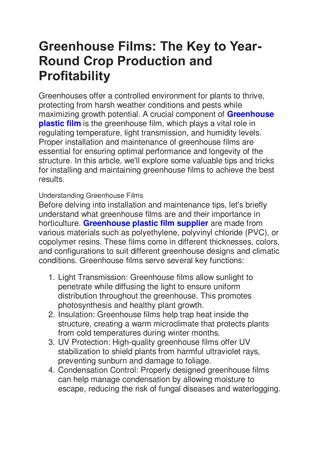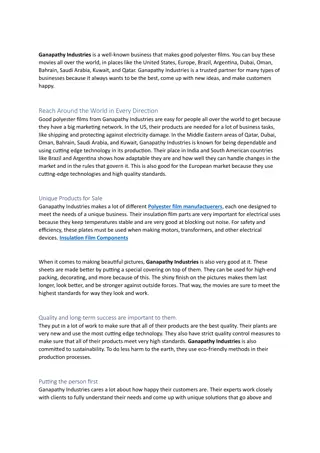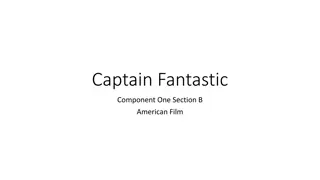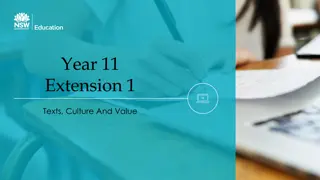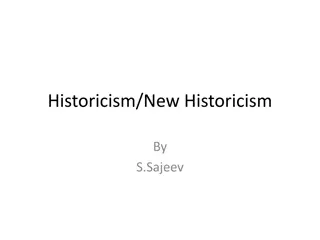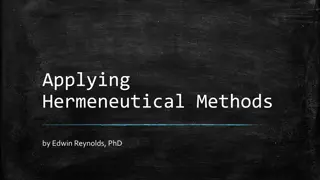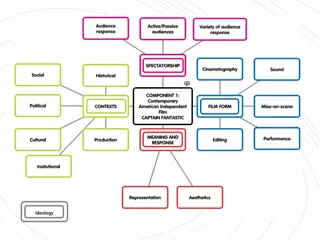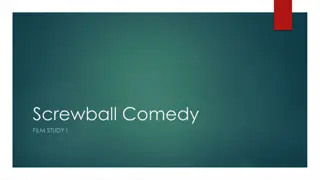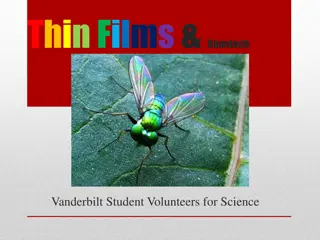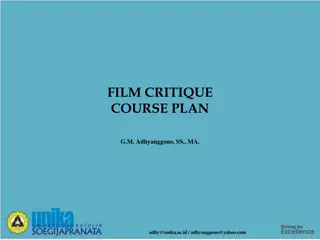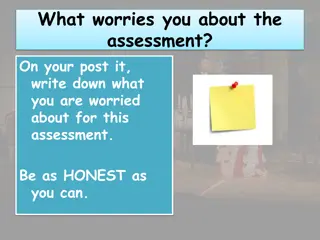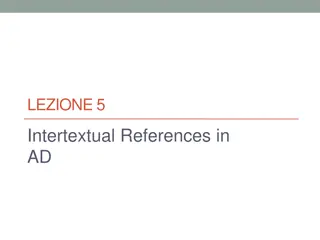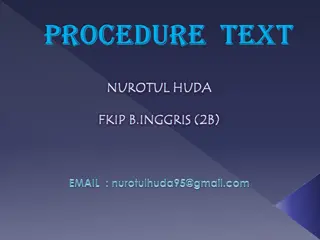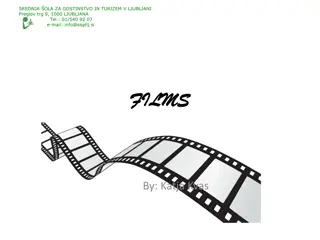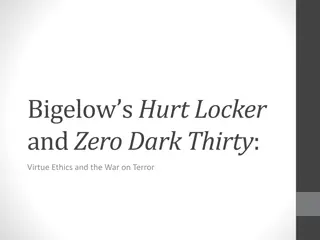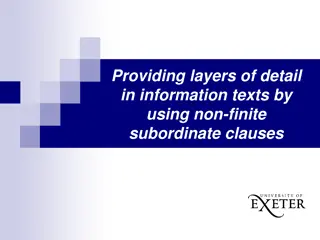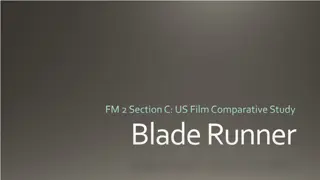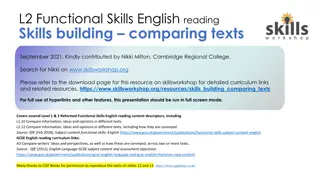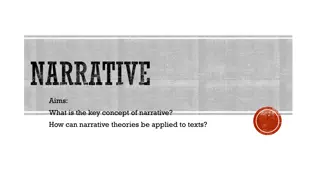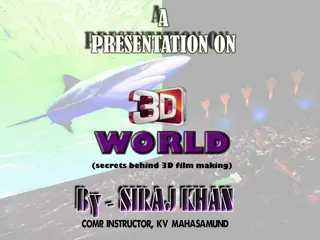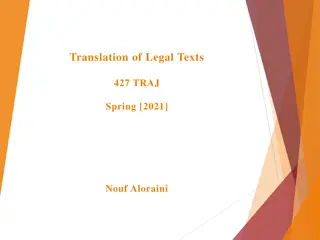Exploring Human Experiences Through Texts and Films
Dive into a journey of understanding human experiences through texts, films, and reflective writing activities focusing on identity, compassion, and representation. Engage with thought-provoking questions and a prescribed text to explore the essence of being human.
Download Presentation

Please find below an Image/Link to download the presentation.
The content on the website is provided AS IS for your information and personal use only. It may not be sold, licensed, or shared on other websites without obtaining consent from the author. Download presentation by click this link. If you encounter any issues during the download, it is possible that the publisher has removed the file from their server.
E N D
Presentation Transcript
Texts and Human Experiences Common Module
The Rubric Common Module: Texts and Human Experience
Cloud Tasks 1. Discuss what you think this unit will be about based on the words from the cloud 2. What are five things you will have to do during this unit? 3. Notice three words that may need a definition. Find definitions for these words and discuss them as a group. 4. Work in groups to come up with a paragraph predicting what this unit will be about, incorporating the words from the cloud. 5. What do you think you will gain from this unit? Find words from the cloud to help you write your response.
Writing the human experience Using the item you have chosen, write a short, memoir-style piece of writing about a human experience relating to this item. Be sure to explore the emotional consequences of this human experience. Example: A stolen wallet that contained the only photo of a lost loved one Write 250-500 words.
Questions to consider What does it mean to be human? 1. What does it mean to be human? 2. What are the key factors that shape our experiences individually and collectively as humans? 3. What are Sanchez s key messages about what makes a difference to our experiences? 4. How does she use language and delivery to convey her key messages? Identify four key language features and three ways that she engages an audience through delivery, such as pace, pause and intonation. 5. What is the concept of representation?
Questions to Consider Oh Wonder 1. What was the purpose of this short film? 2. What perspectives and values of humanity are evident in this film, such as compassion, empathy and tolerance? 3. What is the key message? 4. How do the filmmakers use images, interviews, words and sound to convey their message about what it means to be human? 5. What is the meaning of the refrain? "All we do is hide away All we do is, all we do is hide away All we do is chase the day All we do, all we do is chase the day All we do is lie and wait
Waste Land- Lucy Walker Prescribed Text
Thinking about the documentary... In 1926, the term documentary was coined by John Greerson who defined documentary as the creative treatment of actuality . Consider the validity of the following statements: Documentaries often cross between fact and fiction so they aren t real. Documentary makers use their skills to manipulate the audience towards their own views. In a documentary we see only the view of the world that the filmmaker chooses to show. Documentaries are important ways of understanding social issues and problems and possible solutions. Documentary is a type of public memory. Documentary gives an interpretation on historical issues. Documentary "is unable to give an undistorted purely reflective picture of reality". A documentary is a creative treatment of actuality. Documentary presents facts for examination. Documentary is not ever objective but takes a side. A documentary film is about factual events.
If you were the director... If a documentary were made of your own life: Who would represent you? Who would they interview? What might the questions be? Would evidence be given? Would it include only thoughts and feeling or only facts? Would the structure be chronological? Where would it be filmed?
Before we view the film... How does your knowledge, or lack of it, affect how you approach watching the film? Does the title make you expect a biographical film? Have you seen other Brazilian documentaries? How important is the role of the interviewer in making a documentary? Do you think it would be difficult or easy to meet someone and have them be open and honest with you about their life? Why?
Researching the artist- Vik Muniz In pairs, students research Vik Muniz, his personal journey and inspirations. Students aim to collect 10 significant facts or events from the artist s life.
Analysing Composition Entering Rio- 10:19-12 minutes- Sample notes Shot of Vik looking out the plane window panning aerial shots of favelas iconic shots of Christ the Redeemer and Copacabana Beach Atmospheric music jolted into reality of slums with hand-held footage of the streets, lingering on piles of rubbish Walker s use of titles introduce us to Fabio and Jardim Gramacho Shot of the entry of Jardim Gramacho- we will enter with Vik and Fabio Aerial shot of Jardim Gramacho shows viewers the scale of the site
Analyse the following clips: Entering Jardim Gramacho 12:30- 17:05 Jardim Gramacho from the sky- 22:10- 23:00 Waste Land- 49:33- 5:00 Middle class trash- 50:30- 51:18 Vik s museum speech- 52:00- 53:24 Making the artworks- 53:25- 56:07; 57:18- 59:52; 1:03:14- 1:07:07 The auction- 1:13:18- 1:15:48 Reflecting on the project- 1:17:33- 1:18:14 The Opening- 1:20:45- 1:22:40 Vik s revelation- 1:22:41- 1:25:53
The Artworks How does intertextuality, allusion and symbolism add significance to the representation of humanity in the film?
Add Content Teachers can upload images of Muniz s paintings with the original inspiration. The visuals will assist with the discussion. As well, teachers could use this website: Vik Muniz Pictures of Garbage
Writing Task Consider the following: The pictures Muniz takes are all parodies of famous historical paintings or modern images and provide a 21st century critique of them; Sebastiao mimicks Marat, the French journalist who was killed for his desire for revolution in France, who himself is leading somewhat of a revolution for the rights and welfare of the Catadores in Brazil. Suellen mimicks Madonna (Mary) holding the baby Jesus, a sacred painting, as she holds her 2 children born out of wedlock to an absent drug dealing father, on whom she describes she would be screwed if she depended on him . Comment on the artworks not mentioned above. Why has Muniz chosen them to parody? What do you think he is saying?
The role of storytelling- introducing the subjects of the film How does Walker use storytelling to share the experiences of the participants in her film? View the following introductions to each participant. Comment on: their story/background their personality HOW Walker has filmed them sharing their stories Whose story do you most relate to? Why?
Debate Topic: By sharing their stories in Walker s documentary, the artwork participants lives were changed forever. Affirmative: Waste land has significantly changed the participants live forever. Negative: Waste Land has not significantly changed the participants lives. Record your reflections. Did you agree with your side of the argument? Why/why not?
Related Text Standard English
Literary Devices used in J.K. Rowlings Speech Honest language style, revealing personal revelations and flaws References to classical philosophers- Plutarch, Seneca Storytelling/anecdotes to create pathos Humour/witticism to connect to audience Allusions to Harry Potter sprinkled throughout Provocative language style to encourage action
Extended Response Question Eleanor Roosevelt said that People grow through experience if they meet life honestly and courageously. This is how character is built. How have the composers of your prescribed text and one related text shown us individuals that have grown through their experiences?
Reflecting on the module


